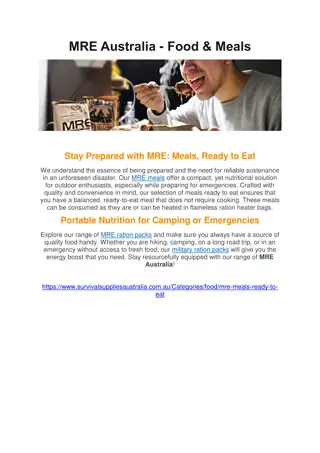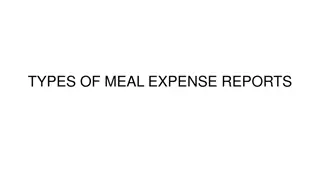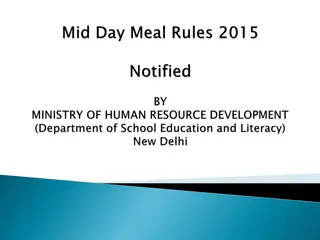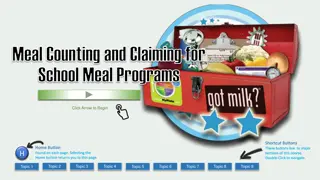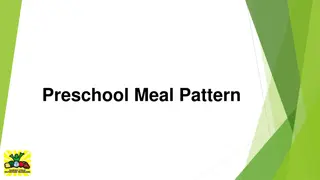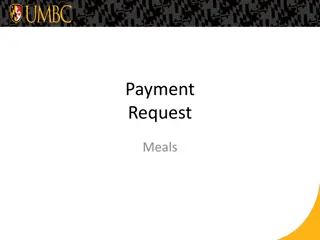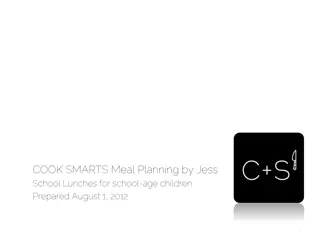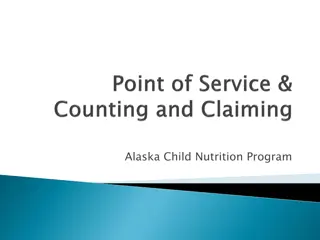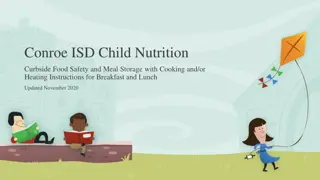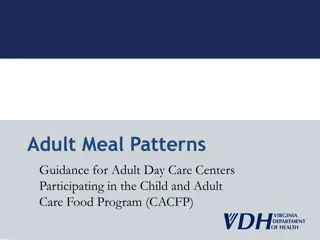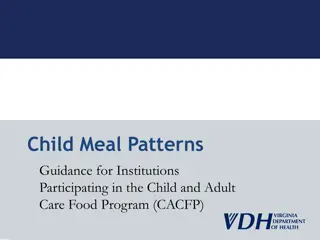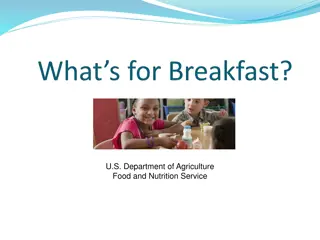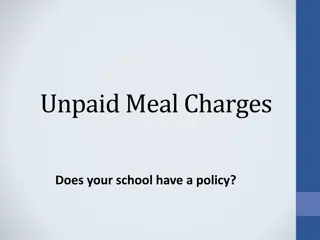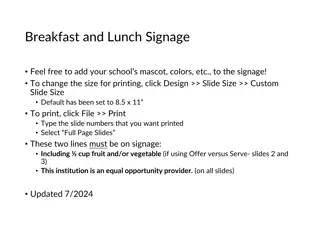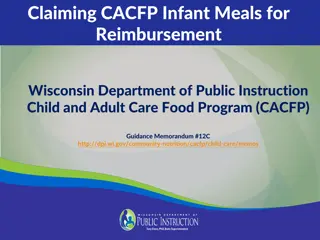Optimizing Your Meals: The Art of Meal Prepping
Meal prepping is a strategic approach to preparing multiple meals in advance, offering benefits such as time-saving, cost-efficiency, healthier eating habits, and reduced food waste. Learn how to start meal prepping, create balanced meals, and make the most of your grocery shopping with these insightful tips and ideas.
Download Presentation

Please find below an Image/Link to download the presentation.
The content on the website is provided AS IS for your information and personal use only. It may not be sold, licensed, or shared on other websites without obtaining consent from the author.If you encounter any issues during the download, it is possible that the publisher has removed the file from their server.
You are allowed to download the files provided on this website for personal or commercial use, subject to the condition that they are used lawfully. All files are the property of their respective owners.
The content on the website is provided AS IS for your information and personal use only. It may not be sold, licensed, or shared on other websites without obtaining consent from the author.
E N D
Presentation Transcript
Meal Prepping The best preparation for tomorrow is doing your best today - H. Jackson Brown February 13th, 2019
What is Meal Prepping? Meal prepping is a term used to describe the process of taking a designated time to prepare multiple meals for throughout the week
Why Meal Prep? Meal prepping has many advantages including Saving time Saving money Meeting nutrition recommendations Decreasing food waste Decreasing fast food/ restaurant visits https://www.pinterest.com/pin/8936899240318197/
How Do I Start Meal Prepping? Step 1: Decide what you want to eat! Venison, baked potato, salad, nuts & seeds Fish, wild rice, squash, berries Peanut butter & jelly on whole wheat bread with carrot sticks & an apple
What makes a balanced meal? Protein Lean meat, beans, dairy, eggs, tofu, tempeh, nuts, fish Carbohydrate Fancy word for sugar Found in breads, grains, pasta, fruit, some veggies, desserts Vegetable and/or fruit 3 servings of dairy per day
Balanced Meal Ideas Sheet pan meals Bowls Protein Carb Veggie https://www.aprettylifeinthesuburbs.com/simple-sheet-pan-chicken-dinner/ https://theliveinkitchen.com/vegetarian-burrito-bowls-2/
How Do I Start Meal Prepping? Step 2: Make a Grocery List!
Meal Prepping Step 3: Make your food Cook to promote the healthfulness of the items Baking, broiling, steaming brings out flavor and retains moisture without adding extra calories Using sodium free seasonings and not adding extra salt to food Flavoring with vegetables Designate which containers you will use to store your items Microwave safe containers Correct portion size https://www.amazon.com/Mrs-Dash-Natural-Seasoning-Original/dp/B00U9WHH78
Meal Prepping Step 3: Make your food Follow safe food practices Wash your hands Prevent cross contamination Cook proteins to required temperatures https://www.fsis.usda.gov/wps/portal/fsis/topics/food-safety-education/get-answers/food-safety- fact-sheets/safe-food-handling/safe-minimum-internal-temperature-chart/ct_index
https://www.bedbathandbeyond.com/store/category/kitchen/food-https://www.bedbathandbeyond.com/store/category/kitchen/food- storage/food-storage-containers/12606/ Storing Food Containers- what to consider? Plastic, glass, ceramic Microwavable safe Dish washer safe Portion size Can also re-use jars and other glass containers http://mydearirene.com/2017/03/25/the-19-ways-i-reuse-food-glass- jars-around-my-home/
Safe storage dates for food Food Item Refrigerator Freezer Cooked Ham 3-5 days 1-2 months Cooked Chicken 3-4 days 4 months Cooked Fish Cooked meat 3-4 days 3-4 days 4-6 months 2-3 months https://www.foodsafety.gov/keep/foodkeeperapp/
Safe Storage Dates for Food- There s an app for that https://www.fmi.org/industry-topics/corporate-social-responsibility/food-keeper-food-storage-database




